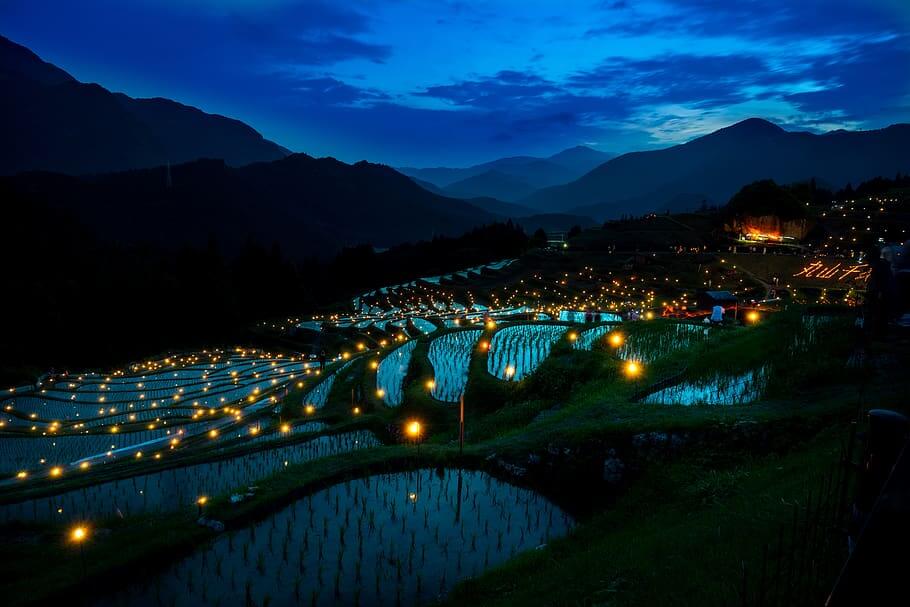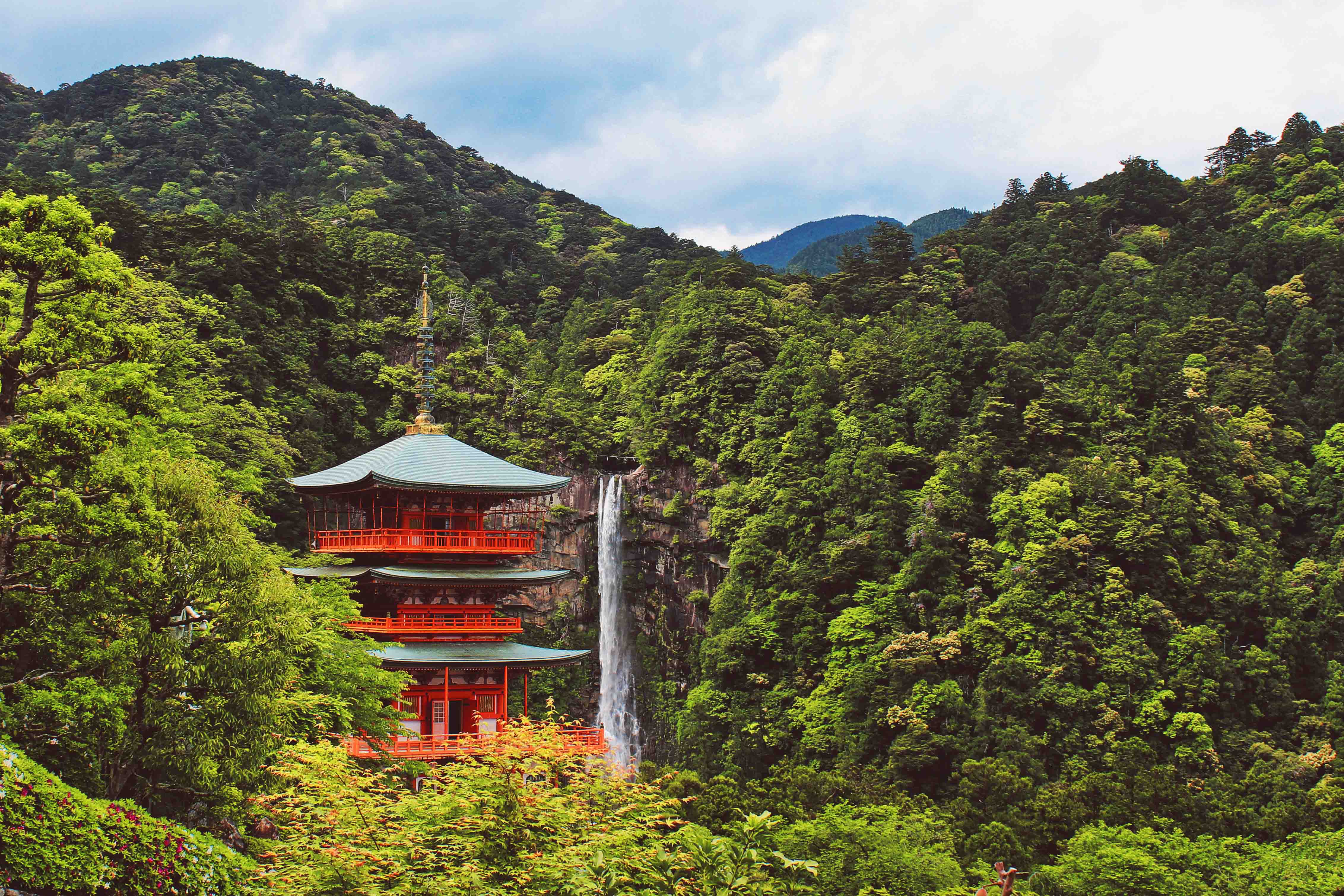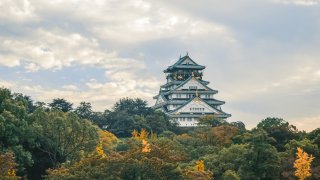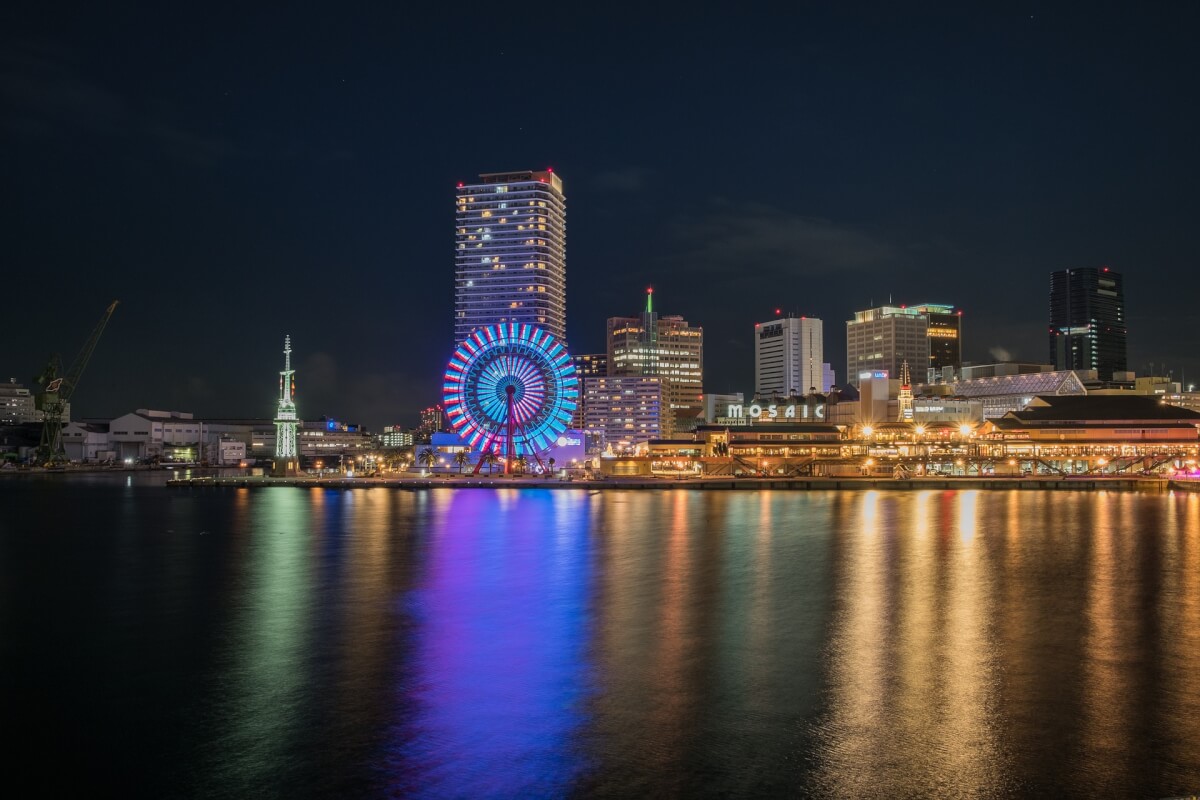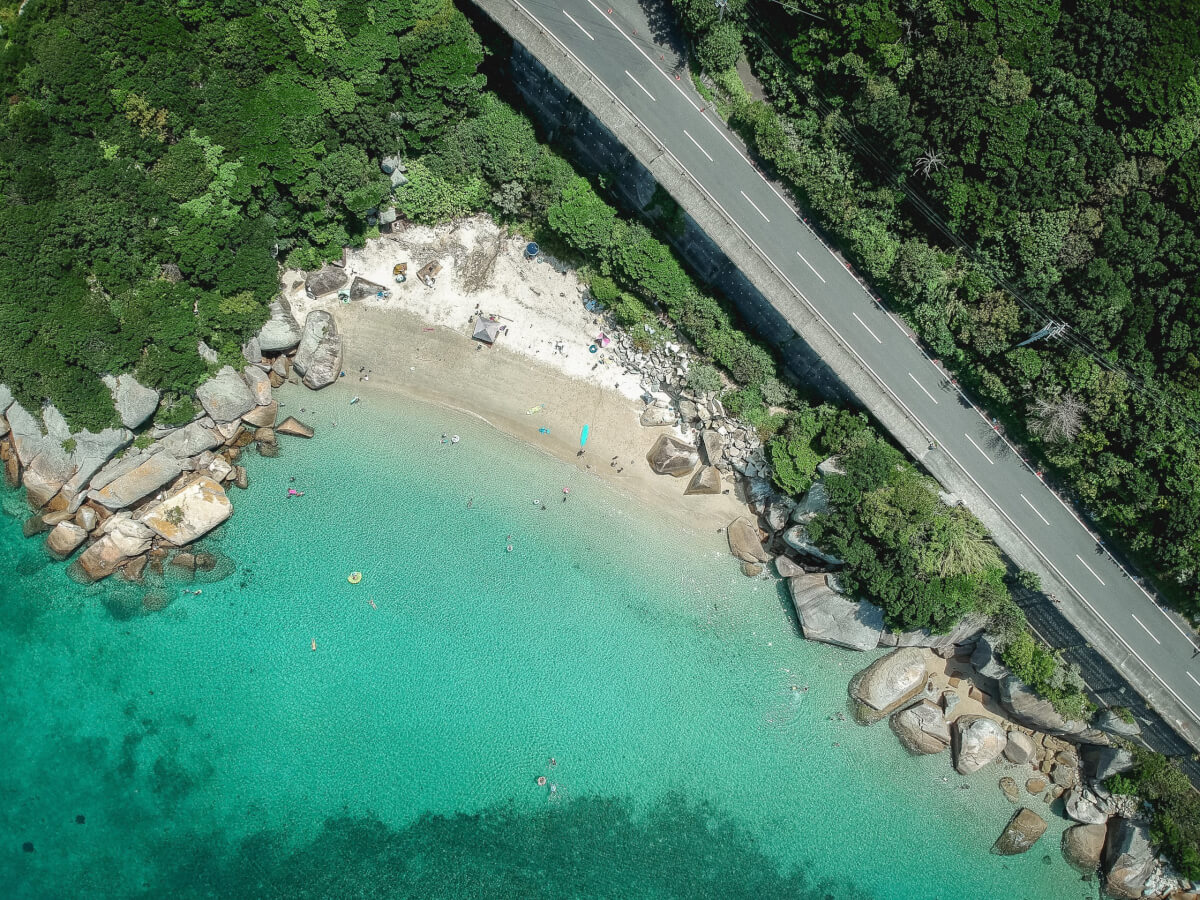Mie Prefecture is located right in the heart of Japan, in the Chubu region. The prefecture has a 1,000 kilometers long shoreline facing the Pacific Ocean and a rich and varied natural landscape. You can go skiing in wintertime on Mount Gozaisho, hike parts of the famous UNESCO Kumano Kodo pilgrimage or have some relaxing time at the seafront beaches where subtropical plants grow in abundance. Here you can also visit Japan’s most sacred Shinto shrine or meet Japan’s famous female pearl divers. In this article we will list our recommended places in Mie Prefecture!
Magose Pass
The Magose Pass is one of the most famous parts of the Kumano Kodo Pilgrimage, the famous network of pilgrimage trails on Kii Peninsula. The hiking trails have been in use for over 1,000 years and the area is one of the 25 designated UNESCO World Heritage spots in Japan. The Magose Pass is a relatively easy hike of about 5 km with the highest point at 325m above sea level. The stone paved path brings you over the pass and is known for the beautiful cypress forest (Hinoki). On your way you can also spot many Jizo stone statues, the guardians of children, especially those who passed away before their parents. At the top of the pass you can opt for adding some more distance and hike to the top of Mount Tengura (522m in 30 min) or Mt. Binshiyama (599m in 2hrs), from where you can have stunning views of the surrounding countryside and the Pacific Ocean.
Check our blog on Kumano Kodo Pilgrimage trails here

How to get to Magose Pass
From both JR Owase station and Aiga station you can take a bus to Washige stop and walk for 10 minutes.
Nabana no Sato
Nabana no Sato is a botanical garden/flower park in Kuwana city, next to Nagoya, that attract visitors from all over the world. It is part of the Nagashima Resort, see below, though located at a distance apart from the other attractions. In spring and summer colourful flowers blanket the park, though the absolute highlight is the spectacular illumination that starts every year in mid-October and runs until the beginning of May. Arrive at sunset and watch the millions of lights bring the park to live. Each year the famous winter illumination are themed! In the centre of the park you can find a tall structure called Island Fuji, from where you can have a bird’s eye view of the park at 45 meters above the ground. Especially beautiful at night with the more than 8 million LED lights used to illuminate the park. But the flower park is enjoyable all day with one of the largest botanical gardens of the region and home to many beautiful flowers including roses, hydrangeas and begonias.
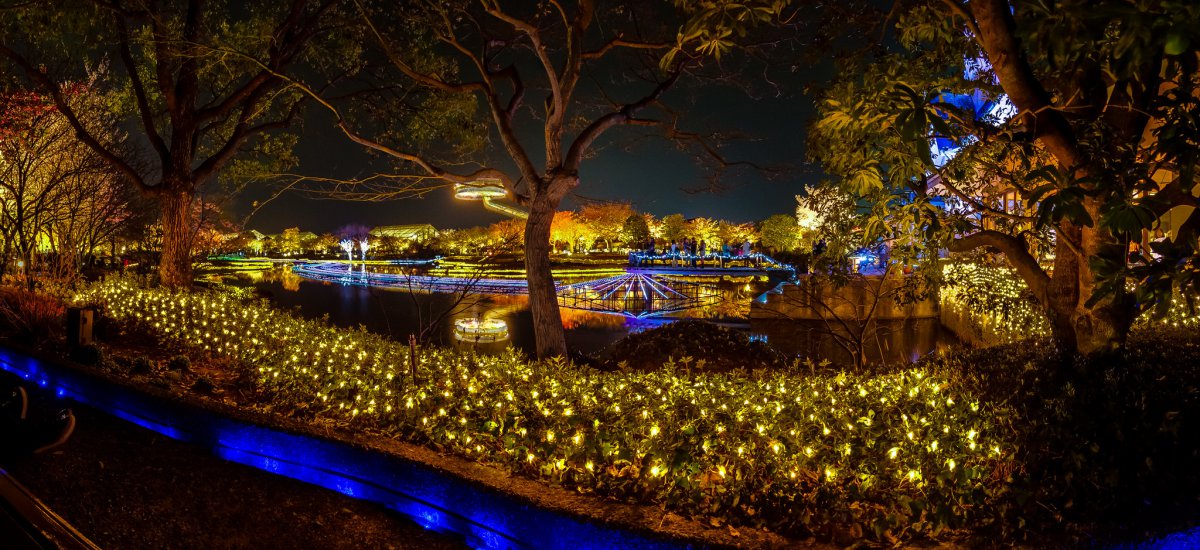
Get your ticket for Nabana no Sato here
Nabana no Sato (Japanese only)
10am – 9pm
¥2,300 (Winter illuminations)
How to go to Nabana no Sato
From Nagoya station take the Kintetsu express train to Nagashima station. There you can take a direct bus to Nabana no Sato for 10 min.
Nagashima Resort
Nagashima is a huge resort, popular among the tourists, just outside of Nagoya. It is located on a long piece of land that is surrounded by rivers and sea, fitting its name nagashima which is Japanese for long island. The resort features five leisure facilities in one; Nagashima Spaland, a water park, a hot spring complex, an outlet shopping mall and the Nabana no Sato flower park.
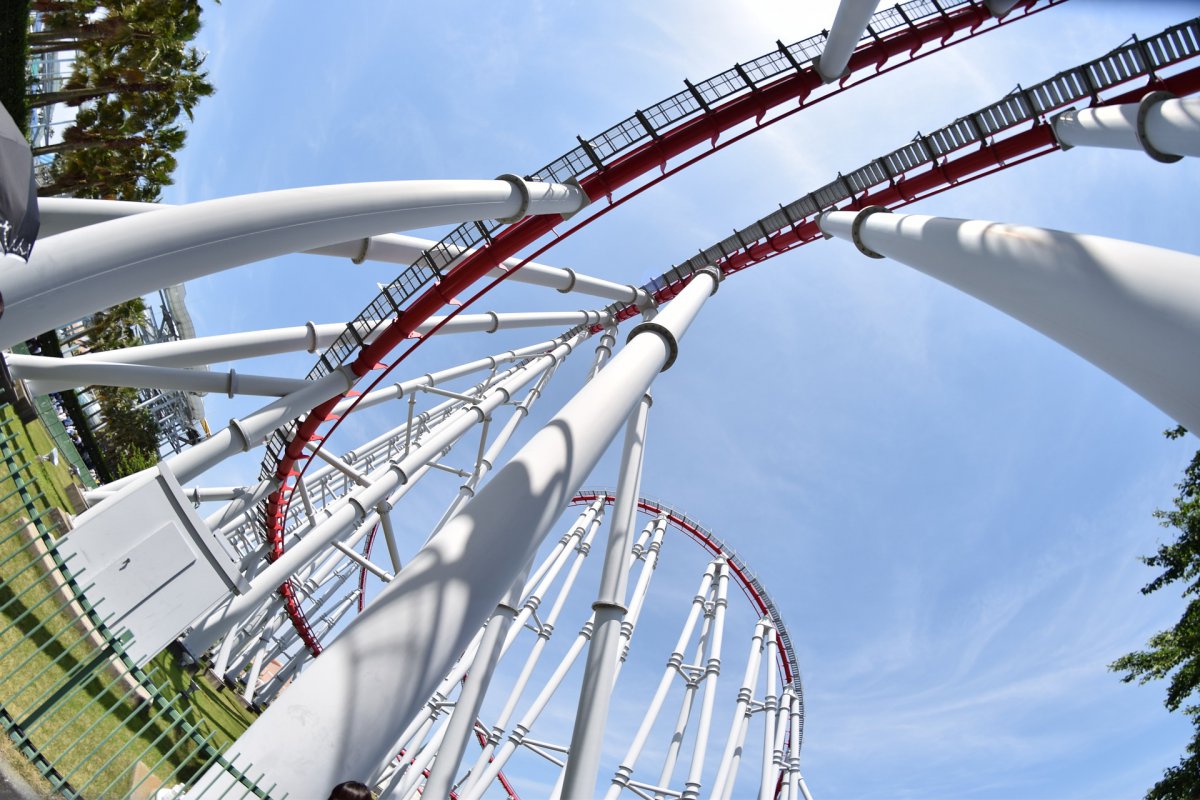
Nagashima Spaland
Nagashima Spa Land has the reputation to be the best amusement for roller coasters in western Japan. With over 50 different rides, it caters to everyone’s taste! Like any amusement park they also offer seasonal attractions, for example a dance party with zombies in October or Christmas Illumination in winter.
Opening hours vary, see official website
¥6,500 (admission, unlimited rides Spaland and waterpark)
¥5,200 (admission and unlimited rides)
¥3,800 (admission, unlimited rides waterpark)
¥1,600 (admission only)
¥300 – ¥1,000 fee per ride
Joyful Waterpark
In the hot summer months you can also opt for cooling off at the nearby waterpark. It has roe than 15 different pools and slides and a famous jumbo wave pool!
Spa Yuami no Shima
End you thrilling day with roller coaster rides and visit the hot spring baths of Nagashima Spa Yuami no Shima. There are 17 different kinds of unique indoor and outdoor baths available, some of which recreate iconic spots in Japan.
9.30 am – 11 pm
¥2,100
How to access Nagashima Spaland
From Nagoya station take the Kintetsu express train to Nagashima station. There you board a bus for 20 min.
Ise Shima
Ise Shima is the southern part of Mie prefecture, and known as a region full of beautiful scenery and interesting spots. The national park, located on a peninsula, is a popular sightseeing area consisting of Ise, Toba, Shima and Minami-Ise. There are many beautiful spots, some great hotsprings and the rugged coastline also offers scenic views over hundreds of little islands located in the bays.
Ise Grand Shrine – Ise Jingù
The Ise Grand Shrine, or Ise Jingù, is the Imperial Palace family shrine and one of Japan’s most sacred Shinto shrines. Jingù is a shrine complex consisting of many shrines centered around the two main shrines, Naikū and Gekū. The Inner Shrine, officially known as Naikū or Kōtai Jingū, enshrines Amaterasu Omikami, the Sun Goddess, and is located south of Ise city. About 4.5 km north you can find the Outer Shrine, officially known as Toyouke Daijingū or Gekū, is dedicated to worship Toyouke-Ōmikami, the deity of agriculture, rice harvest and industry. Besides the two main shrines, there are another 123 shrines, 91 connected to Naikū and 32 to Gekū. The total area is about the same size as the centre of Paris!
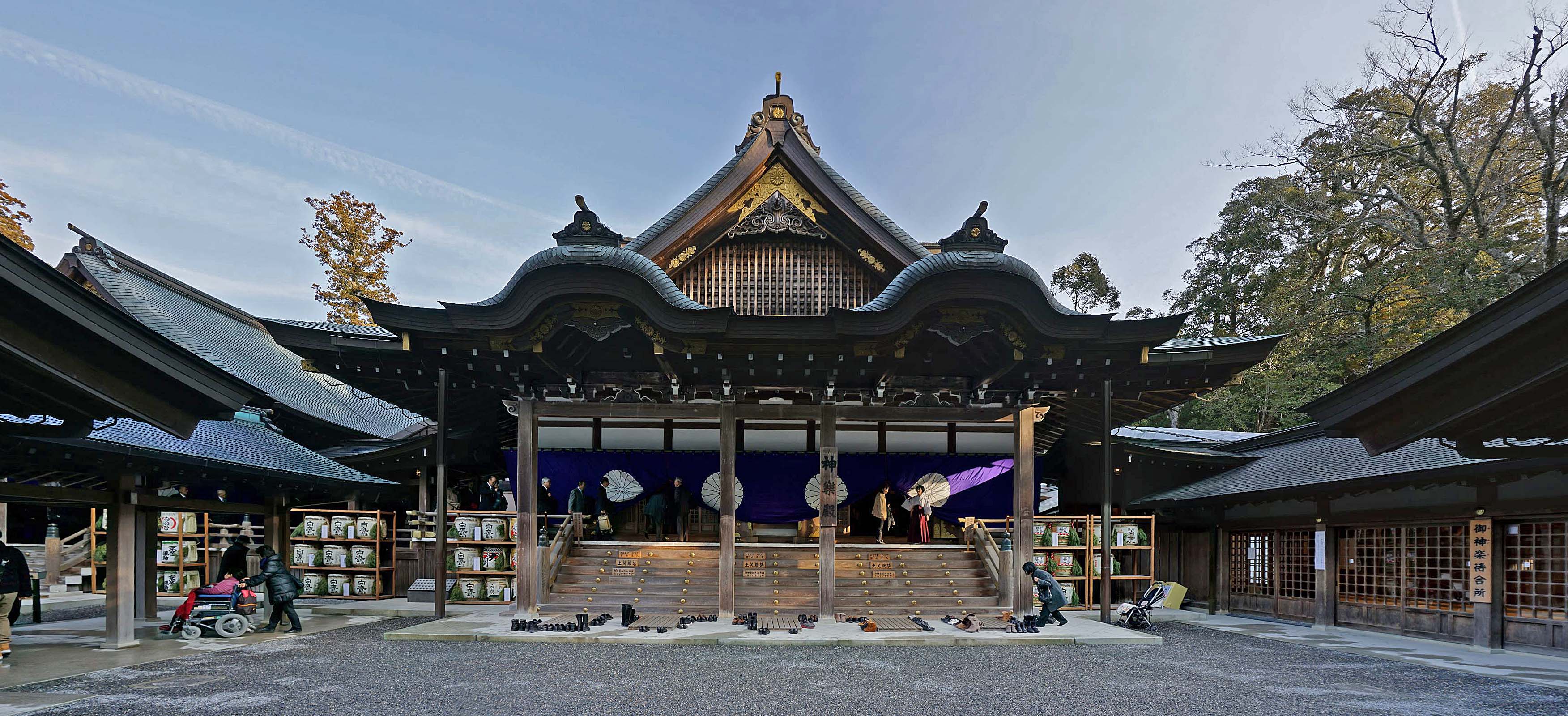
Visiting the shrines interior is strictly limited, but visitors are free to walk around in the surroundings and explore the many shrines and forest. A visit to the Inner Shrine alone typically lasts between 60-90 minutes, and you can experience a unique purification opportunity using the water from the sacred Isuzugawa River. Near the Inner Shrine, you can also visit Okage Yokocho, an old-fashioned Japanese walking street with many traditional shop selling all kinds of goods. The street is on the way from the bus stop to the main gate of Ise Jingu Shrine complex and is dedicated to the gods of Ise Jingu.
Oharaimachi
Oharaimachi is the traditional approach to the Inner Shrine, about one kilometer in length and lined with many traditional buildings on both sides. Because the area has been a popular pilgrim tour for centuries, some of the shops and restaurants have been serving pilgrims and tourists alike for several centuries! Okage Yokocho is located about halfway down the approach. You can try some of the local specialties like Akafuku (mochi rice and red bean paste) and Ise Udon or enjoy Kamishibai, a traditional form of storytelling and street theatre.
Ise Grand Shrine
5am – 6pm (Jan – Apr, Sep)
5am – 7pm (May -Aug)
5am – 5pm (Oct – Dec)
Free admission
How to go to Ise Jingu
The Outer shrine is located about a 10 minute walk from Ise-shi station or Ujiyamada station. The inner and outer shrine are connected by frequent buses and the travelling time is about 15 minutes. Alternatively you can make your way on foot, which will take you about 60-70 minutes.
Meoto Iwa
Meoto Iwa are also known as the two wedded rocks. You can see a large stone, representing the husband, connected to a smaller stone, representing the wife. The rocks are connected by shimenawa rope, a straw rope that marks the boundary to something sacred. Three times a year, a special ceremony is held to replace to rope. The perfect circumstances to watch this iconic view is when the tide is at sun rise. When you’re lucky you might even spot Mount Fuji in de far distance! Near the rocks, you can also visit Futami-Okitama Shrine, known for its many frog statues. Frogs are believed to be a type of charm for bringing people or things back, resulting from a similar sound for the Japanese word for frog and returning home: kaeru.
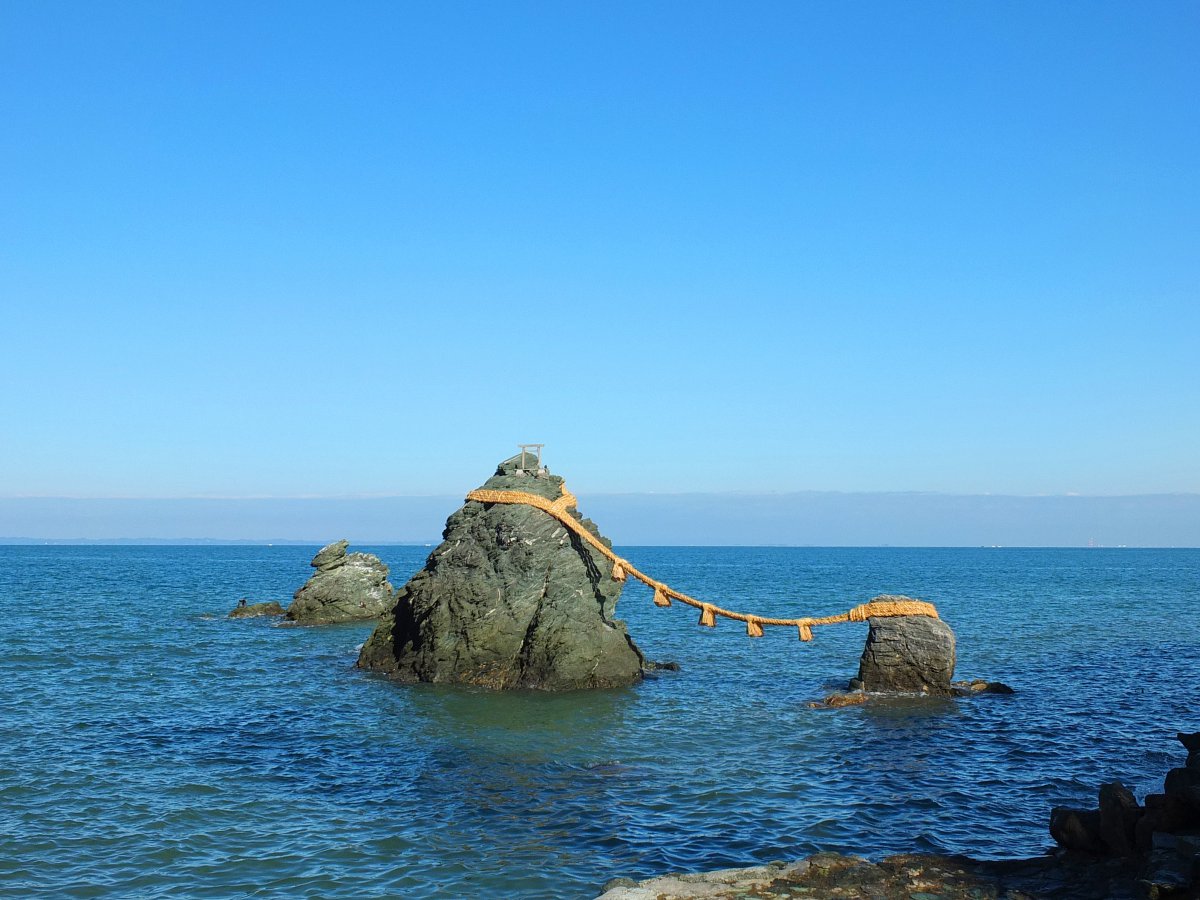
Meoto Iwa
From JR Futaminoura station take a walk for 15 minutes
Ama divers at Mikimoto Pearl Island
Japan is known for its rich culture and many traditions, Ama divers being one of them. Ama divers are (mostly) woman that free-dive underwater to collect aquatic jewels such as sea urchin, turban snails, pearls and abalone. Ama (海女) is Japanese for sea woman, and they can be found in Okinawa, Izu Peninsula and other parts of Japan, but are mostly living and working in Mie Prefecture. Traditionally the woman would dive into the sea, wearing only a fundoshi (loincloth) and a tenugi (bandana). When Kokichi Mikimoto began the famous pearl farms that were responsible for the pearl industry of Japan, he employed many of the ama for their expertise. This has helped cultivating the Ama tradition alive, though he did make some small changes in the way they would operate and the clothing.
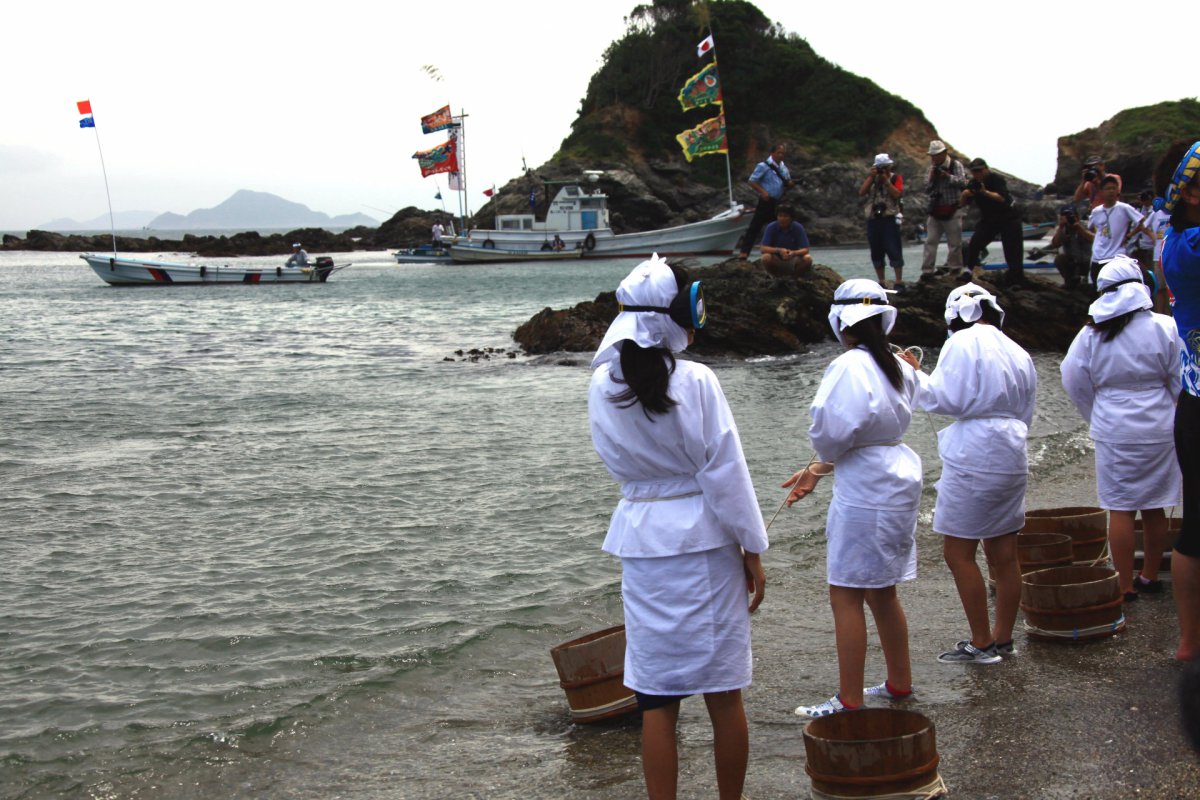
Even though, the practice has died out entirely in some parts of Japan, you can still watch some of the Ama at work in Mie prefecture. Visit Mikimoto Pearl Island, home to a great museum where you can see some amazing pearl craft pieces and see ama demonstrations.
If you want to learn more about this old tradition you can also join some activities:
- Meet the Ama divers – Meet the ama and hear about their incredible stories.
- Diving with Ama – Try diving for treasures yourself!
Mikimoto Pearl Island
8.30am – 5pm
Admission fee ¥1,650
How to access Mikimoto Pearl Island
Mikimoto Island is located within walking distance from Toba station
Shima Spain village
When you are looking for a different experience, visit the exotic environment of Shima Spain Village. Shima Spain Village consists of consists of 3 facilities including a theme park, Parque de España, a resort hotel Shima Spain Village, and the hot spring bath Himawari-no-yu. In Parque de España can can enjoy many Spain-inspired attractions and live shows, including flamenco shows, and it is designed in the same style as Disneyland. Enjoy a fun day out in the Mediterranean town or spend the night at the resort!
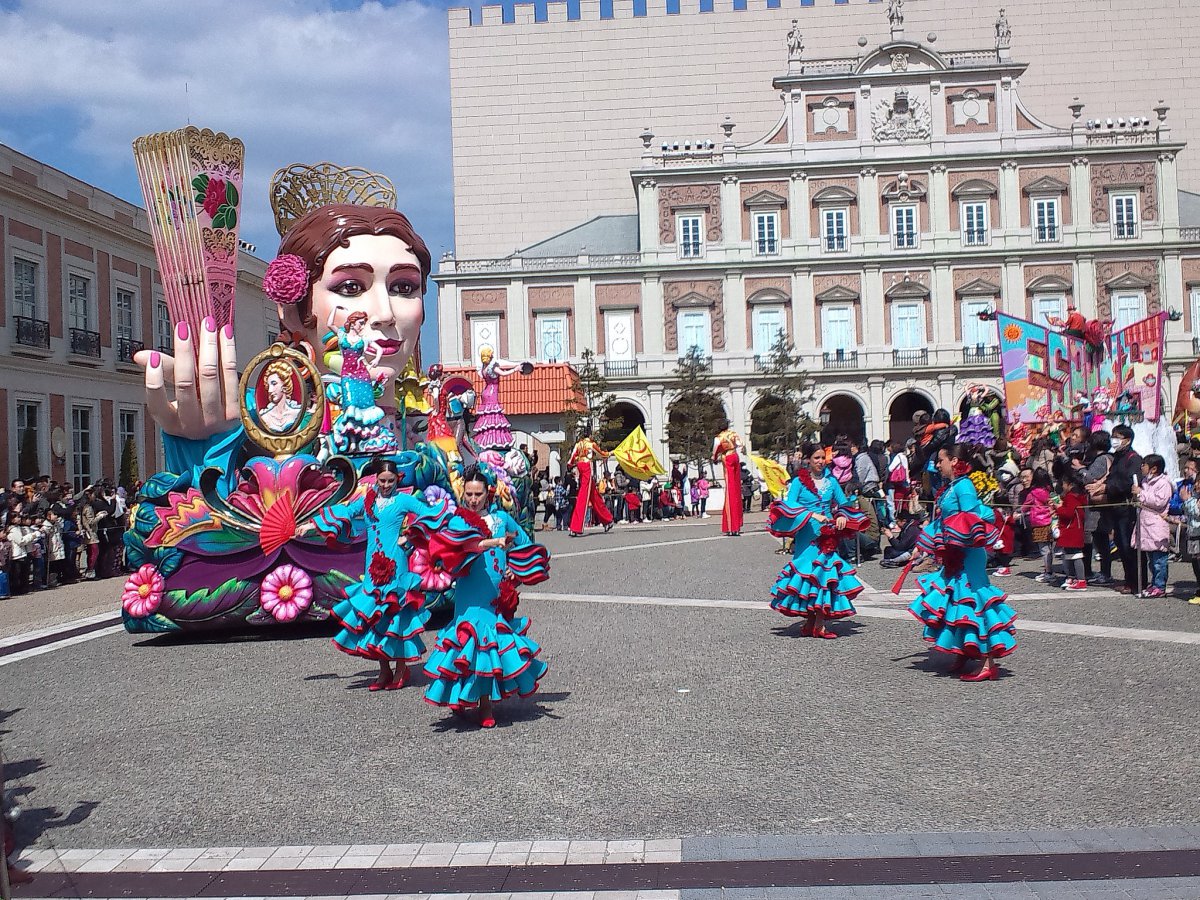
Shima Spain Village
9.30am – 5pm
¥5,400 (adult), ¥3,600 – ¥4,400 (children)
Iga Ninja Village
Back in the days, ninja’s were warriors who were specialized in spying and gathering information. One of the main ninja training school was located in Iga Ueno. There are three main attractions in the Iga-Ueno, the Ninja Museum of Iga-Ryu, Iga Ueno Castle, and Danjiri Hall and all are great to visit.
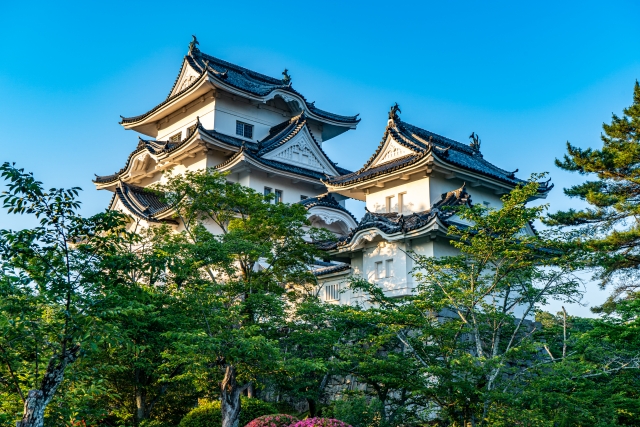
Nowadays, the art of the ninja skills are no longer practiced professionally, but you can still learn about the amazing skills of the free-moving warriors. At the Ninja Museum in you learn and see the practices of ninja in the ninja residence and the exhibition halls. There is also a regular show where ninja’s showcase how to use the actual weapons.
Also outside of the museum you will spot the ninja’s, around the village you can see little children playing with katana (sword) and shuriken (throwing stars). When you visit the village by train and get off at Iga-Ueno station, you will be greeted by ninja mannequins and drawings. And if you feel like becoming a ninja yourself, you can rent a ninja costume at the Danjiri Hall.
Enjoy a 1-day All-About-Ninja tour
Iga-ryu Ninja Museum
9am – 5pm
¥800 (there are some discount tickets available when you visit the 3 locations, ask about them at the entrance)
Akame 48 Waterfalls
A great spot to immerse yourself into nature are the 48 waterfalls located in Akame. Japan has a large number of waterfalls due to its large mountainous area and large amounts of water. Akame 48 refers to a valley with numerous waterfalls, though, the total doesn’t equal 48. The numbers merely refers to ‘many’. The valley is also home to several hiking trails. Walk along the trails in the area and look out for the giant salamanders that live there too. This spot is known to be a former ninja training spot. Several events and tours are being organized throughout the year, try out your ninja skills, do some waterfall meditation training or learn all about the edible plants growing in the area. The valley is beautiful all year around, though the sakura leaves in spring and the autumn colours in fall, definitely add to its beauty.
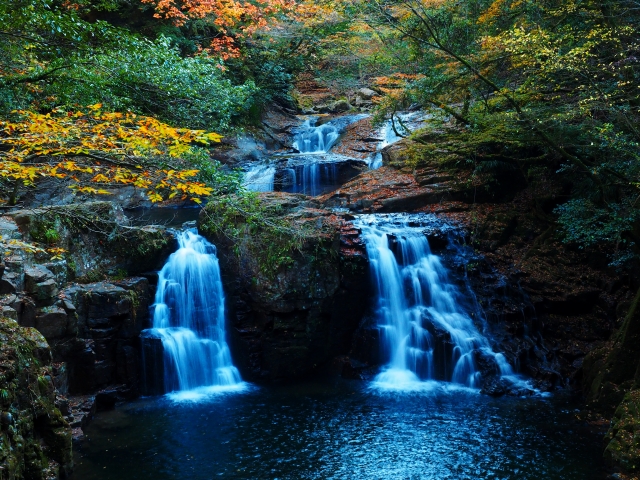
Akame 48 falls
9am – 5pm (Apr – Nov)
9.30am – 4.30pm (Dec to Mar)
Admission fee ¥400
How to get to Akame 48 waterfalls
Take a train to Akame Guchi station. From there you can take a regular bus for 10 minutes, or walk 5km through the beautiful surroundings.
Maruyama Terraced Rice Fields
In the southern part of the prefecture, near Kumano, you can find the beautiful rice fields of Maruyamasenmaida. Over 1,000 rice paddies of all shapes and sizes, carved into the hills together form a beautiful scenery. Parts of the Komodo Kodo Pilgrimage route pass close by, providing suburb views of the fields. The area is not very well accessible by public transportation so we recommend to travel around by car.

Where to stay in Mie
Shorenji Lake Hotel – beautiful ryokan located in the middle of nature
Oshiya – traditional Japanese hotel with stunning ocean views
Guest House Wagaranchi Kai – beautiful guesthouse with beach access in south Mie
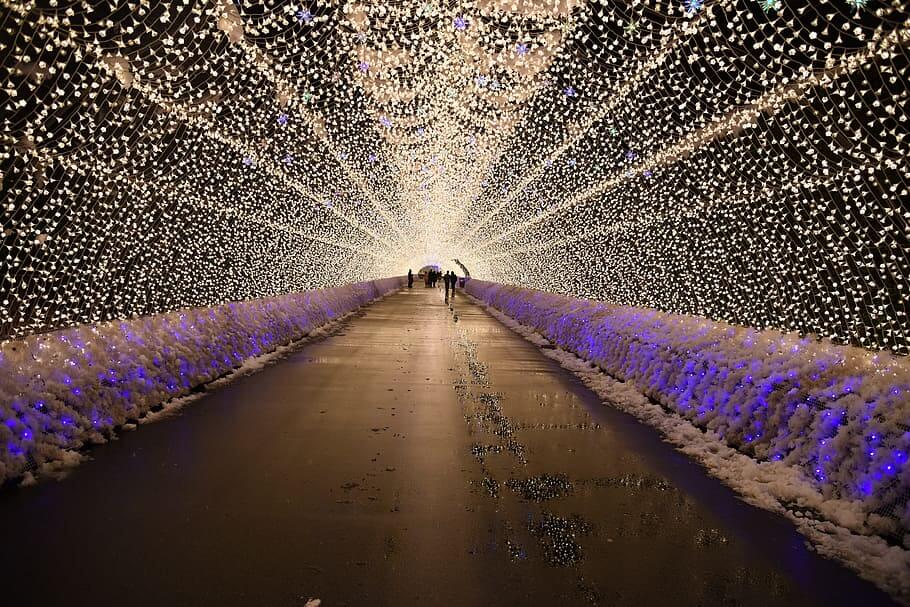
Mie Prefecture, in the central part of Japan’s main islands Honshu, has a lot of natural beauty to offer as well as some authentic experiences like ninja’s and ama free diving. The prefecture is also home to many sacred locations that offer your the chance to really immerse yourself in the Japanese culture! We hope you will enjoy your trip to Mie Prefecture.
Follow us on Instagram or Facebook for more travel inspiration. Or tag us to get featured!
Happy travelling!
More travel destinations near Mie
This post may contain some affiliate links. When you click through and make a purchase we may receive some commission, at no extra costs to you
